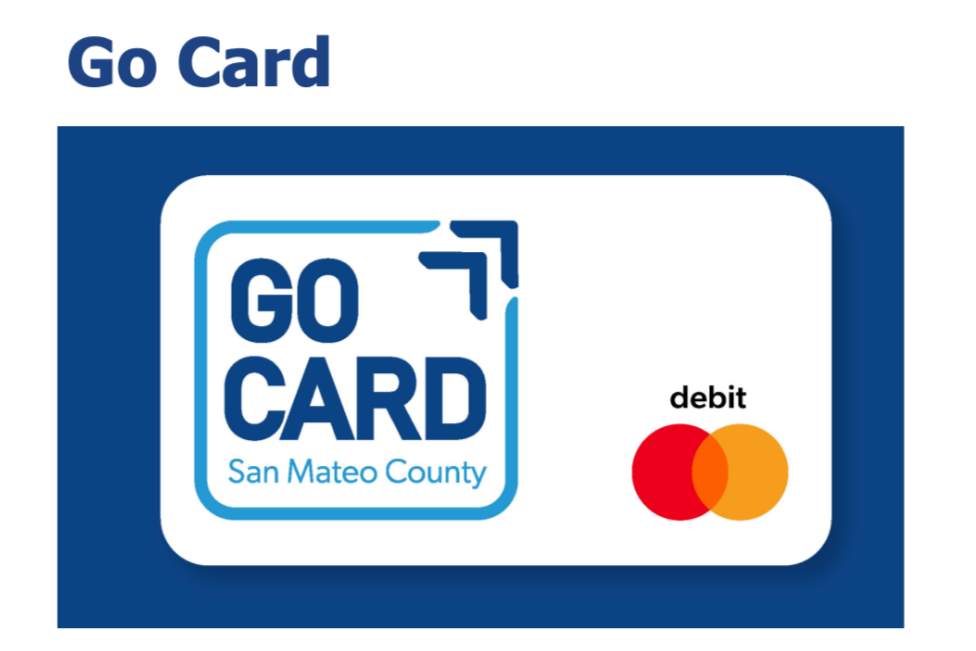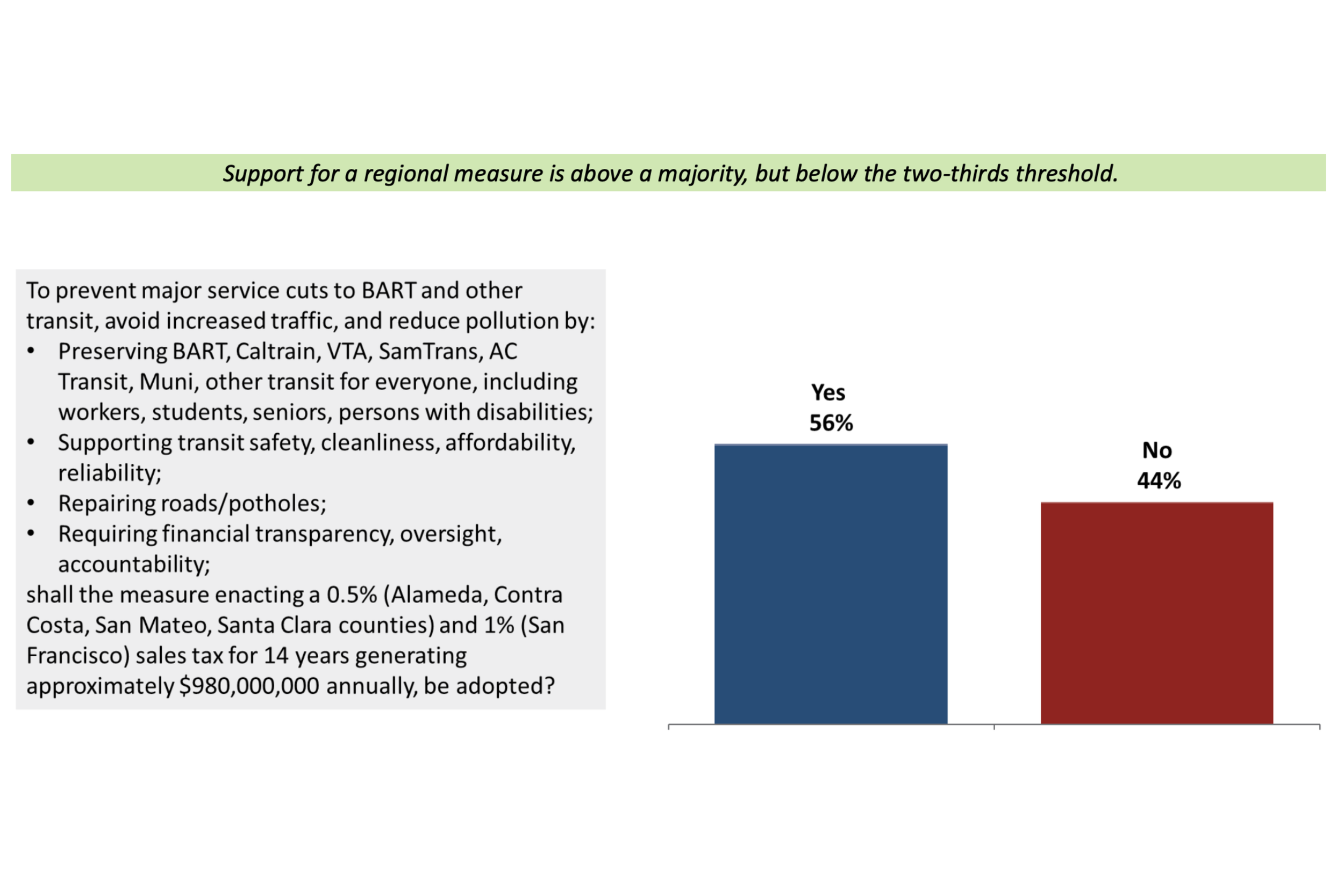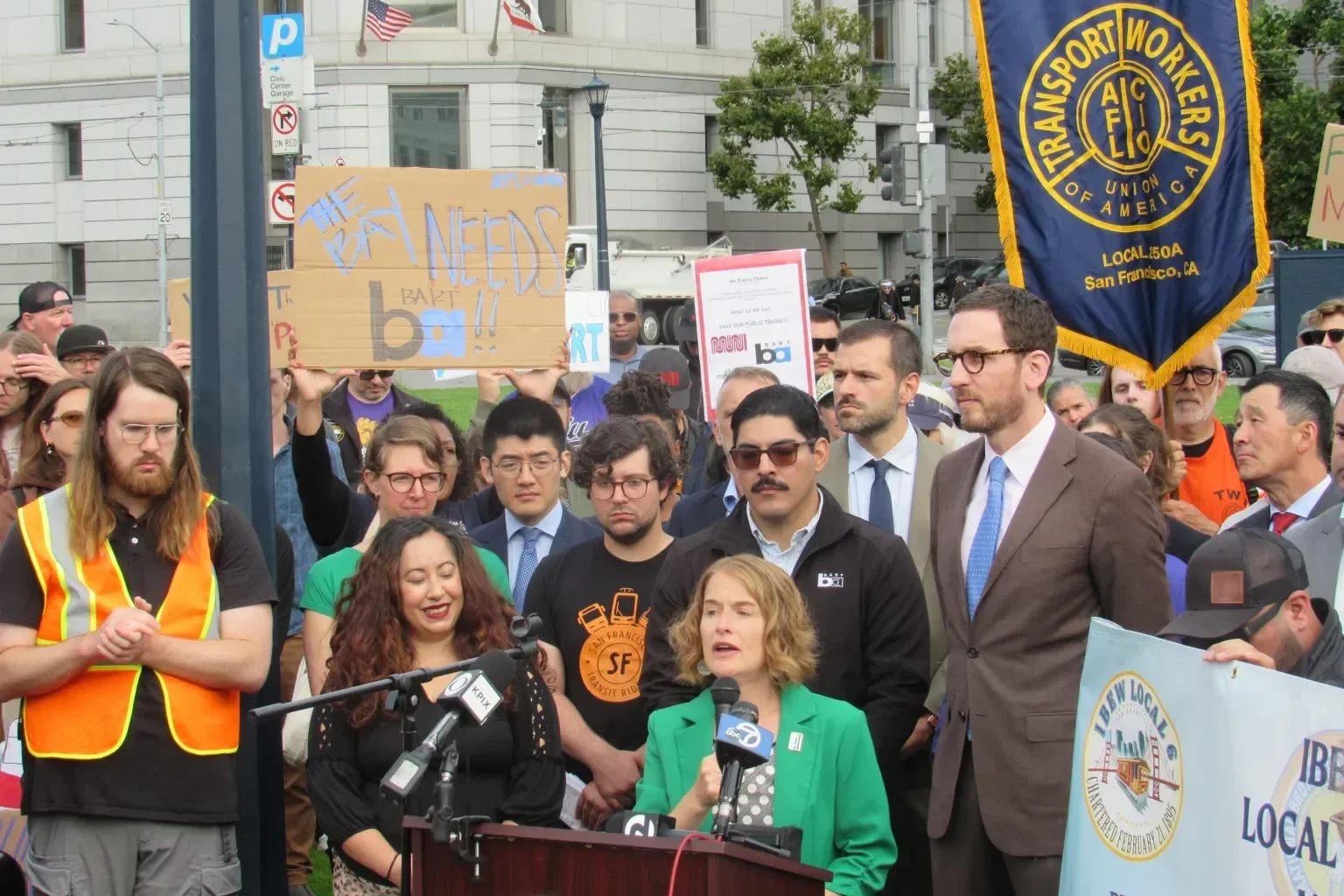New “mobility wallet” programs are offering subsidies for low-income people to use transit along with other transportation modes. Innovation is welcome, but also the proliferation of programs adds inconvenience for low-income people.
Read MoreThe Bay Area transit funding measures can pass with a signature-gathering effort, according to new polling. Voters highly value public transit and perceptions have improved since 2023.
Read MoreFunding shortfalls threaten to reverse Caltrain's dramatic ridership boom following the start of faster, more frequent electric train service. The agency could be forced to run only hourly service, run no weekend service, and more.
Read MoreCounty Connection's 4 bus from Walnut Creek BART to downtown has an opportunity to improve service and seamless transfers. Seamless Bay Area supports local advocacy for improvement.
Read MoreThe governor recently signed AB1250 (Papan), a new bill to streamline the paratransit recertification process. This bill reduces a longstanding inconvenience for paratransit users. By simplifying the recertification process, people with disabilities won't have to go through lengthy processes to prove their disability over and over again.
Read MoreGetting around the Bay Area by transit is about to become simpler, cheaper, and more convenient. Starting December 10th, transit agencies are rolling out Clipper 2.0, upgrading the decades-old Clipper Card with a modern and effective fare payment system.
Read MoreSweden’s division into 21 metropolitan regions, each with its own elected government, plays a critical role in delivering excellent and widely used public transportation. Sweden’s diverse regions have different transportation needs, and its region-led system of governance allows for significant variation in approaches to public transportation, while maintaining consistent integration of fare, schedule, and wayfinding within regions.
Read MoreIf approved by voters at the November 2026 ballot, this measure will prevent deep service cuts to BART, Caltrain, Muni, AC Transit, and other transit services, fund regional transit integration initiatives, and generate flexible funds for counties to spend on other transit-related priorities. Now, the work begins to kick off a massive signature gathering effort to get this measure on the November 2026 ballot and then the work of getting voter approval.
Read MoreIllinois may be leapfrogging ahead of California with a bill to reform governance, funding and transit project delivery for Chicago Transit Authority, Metra and Pace. SB 3438 would replace the existing Regional Transportation Authority (RTA), the MPO for the Chicago region, with the Northern Illinois Transit Authority (NITA) to coordinate schedules and fares for these services. NITA’s full set of responsibilities and authorities would make arguably the first true ‘network manager’ in the US - and could thus be transformative in leading toward a seamlessly integrated network in the greater Chicago region.
Read MoreUnfortunately, riders who qualify for discounts - senior, low income, youth and disability - cannot yet get access to their discounts if they pay with a credit, debit, or prepaid card. BART’s data shows that 15.6% of riders use one of these discounts. MTC says that the capability for people to get access to their discounts when paying with a credit or debit card is planned for the future, but no schedule details are available yet.
Read MoreSweden’s public transportation seamlessly connects urban, suburban, and rural areas across a vast geography larger than the state of California. Seamless Bay Area board member Ian Griffiths kicks off a multi-part blog series focusing on what lessons California can learn form Sweden’s public transit, as he travels to Sweden’s major urban regions interviewing key transportation leaders.
Read MoreOn September 30, California’s State Transit Transformation Task Force has opportunities to advance policies for more coordinated transit and more timely and cost-effective capital projects. However, the draft recommendation has a catastrophic gap in operating funding, as well as big gaps in the potential to advance timely and cost-effective capital projects, and room for improvement in coordination. In order to fill in the gaps, please send a letter and/or make public comment on these points.
Read MoreSince the inception of the TNC Access for All Program in 2019, companies like Uber and Lyft have provided over $48 million for wheelchair accessible trips in an effort to increase availability and improve response time for people with disabilities, leading California to be a nationwide leader in the deployment and adoption of on-demand transportation options for persons with disabilities. The program builds a clear mechanism to fund TNC access, but results have lagged behind the program’s goals. While ridership has increased since the start of the program, service can be unreliable for wheelchair users, and there are more opportunities to improve access in the future.
Read MoreOn Monday morning, over 200 advocates rallied and marched in San Francisco and helped revive negotiations in Sacramento about a $750M loan to keep transit running in the Bay Area. That afternoon in Sacramento, the Assembly Transportation Committee passed Senate Bill 63, the bill authorizing a regional transit funding measure for the Bay Area.
Read MoreThe August meeting of California's Transit Transformation Task Force (TTTF) made progress on important statewide recommendations for transit coordination and capital project reform. These topics had been discussed at earlier meetings but faced pushback from agencies. In August, supported by comments from transit riders and supporters around the state, there was overall support for recommendations, with some questions and debate. There is only one more meeting scheduled for the Task Force to make its final recommendations.
Read MoreThis is your quick guide for all the fun taking place across the Bay Area including 70+ excited and interactive events, the Ride Contest, nominating your Transit Heroes of 2025, and more!
Read MoreIn the first week of August, San Mateo and Santa Clara Counties voted to participate in the regional transit funding measure, joining San Francisco and the East Bay. If the bill is finalized in the legislature and the ballot measure passed in November 2026, the regional transit funding measure would prevent deep service cuts to major transit services at BART, Caltrain, Muni and AC Transit, and would provide funding for coordinated, affordable service, including free transfers, standard low-income discounts, unified navigation, and faster, more reliable bus service.
Read MoreDetails on the new plan to streamline transit service in Marin and Sonoma counties is now public. The MASCOTS Plan aims to increase ridership 8-15% by restructuring North Bay transit service. The plan calls for increasing SMART rail frequency and a reorganization of bus routes. While we are encouraged that so many agencies have been able to collaborate toward improving ridership and system legibility through this project, advocates call out several concerns with the plan.
Read More

















